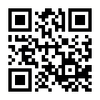文章基本信息
- 标题:Le télétravail, une réponse à la demande de mobilités spatio-temporelle dans la gestion du quotidien des populations actives et de leurs familles
- 本地全文:下载
- 作者:Laurence Thomsin
- 期刊名称:Interventions Économiques
- 印刷版ISSN:0715-3570
- 电子版ISSN:1710-7377
- 出版年度:2003
- 期号:31
- 出版社:Association d'Economie Politique
- 摘要:
One of the main characteristics of the contemporary Information Society is the disappearance, due to NICTs, of hundreds of borders between persons, places, their roles and activities. This not only concerns the professional sphere, but the private sphere as well: changes in relations between work colleagues, telework places and other places, and finally, within the domestic sphere - between private space and work space. In this situation individuals have to recreate new equilibria. Teleworkers, in particular, have to be inventive, since in this area this is no precedent to refer to. To address the question of the spatial-temporal consequences of an individual daily practice of this work mode, we have conducted a quantitative and qualitative study of the teleworking population of an international company. These observations within a topical observatory have enabled us to identify, firstly, the practices and forms of teleworking, and secondly, the diversity of teleworkers’ profiles. For each of these profiles, the study has allowed bringing to the fore the re-arrangement of daily mobility in its professional and non-professional dimensions.
- 关键词:telework; family; social time; flexibility; daily mobilities

